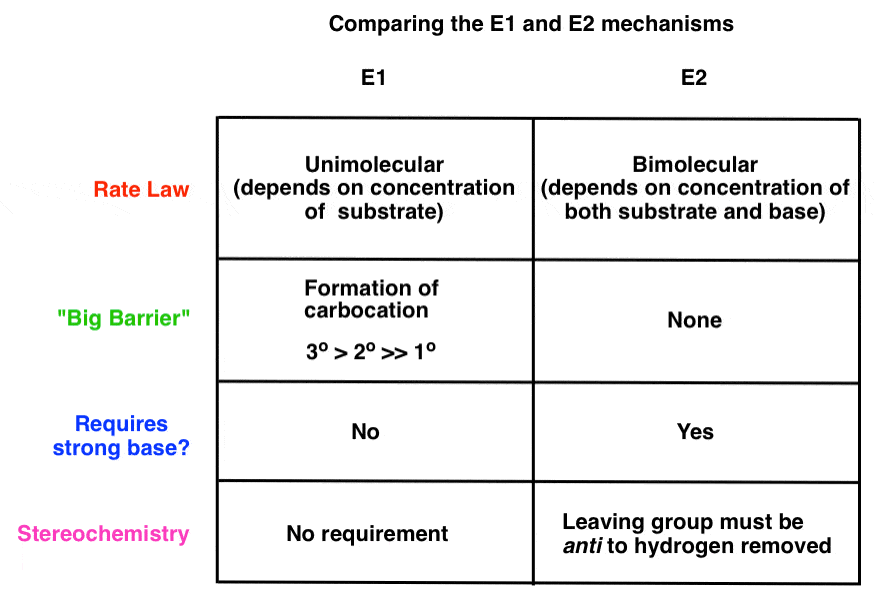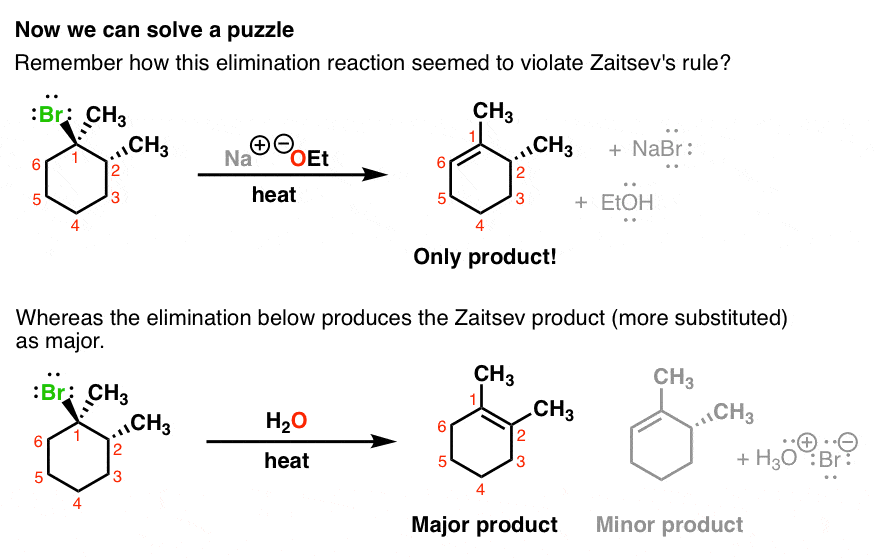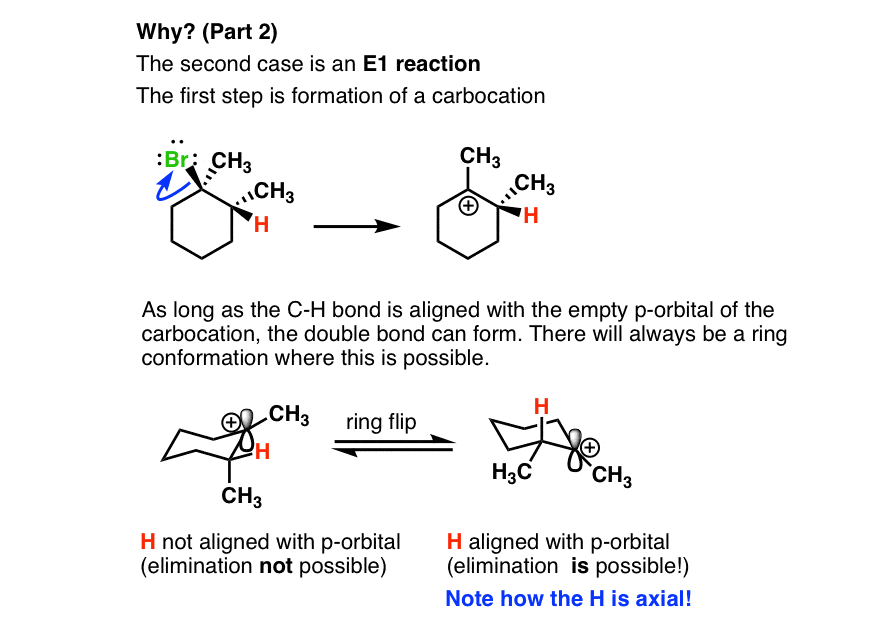E1 versus E2 : Comparing The E1 and E2 Reactions
Now that we’ve gone through the mechanisms of the E1 and E2 reactions, let’s take a moment to look at them side by side and compare them.
Table of Contents
- Comparing The Mechanism Of The E1 and E2 Reactions
- What Do The E1 and E2 Reactions Have In Common?
- How Are The E1 and E2 Reactions Different?
- E1 vs E2: Why Does One Elimination Give The “Zaitsev” Product, And The Other Elimination Does Not?
- The Key Requirements Of Stereochemistry In The E2 Reaction
- (Advanced) References and Further Reading
1. Comparing The Mechanism Of The E1 and E2 Reactions
Here’s how each of them work:

2. What Do The E1 and E2 Reactions Have In Common?
Here’s what each of these two reactions has in common:
- in both cases, we form a new C-C π bond, and break a C-H bond and a C–(leaving group) bond
- in both reactions, a species acts as a base to remove a proton, forming the new π bond
- both reactions follow Zaitsev’s rule (where possible)
- both reactions are favored by heat.
3. How Are The E1 and E2 Reactions Different?
Now, let’s also look at how these two mechanisms are different. Let’s look at this handy dandy chart:

The rate of the E1 reaction depends only on the substrate, since the rate limiting step is the formation of a carbocation. Hence, the more stable that carbocation is, the faster the reaction will be. Forming the carbocation is the “slow step”; a strong base is not required to form the alkene, since there is no leaving group that will need to be displaced (more on that in a second). Finally there is no requirement for the stereochemistry of the starting material; the hydrogen can be at any orientation to the leaving group in the starting material [although we’ll see in a sec that we do require that the C-H bond be able to rotate so that it’s in the same plane as the empty p orbital on the carbocation when the new π bond is formed].
The rate of the E2 reaction depends on both substrate and base, since the rate-determining step is bimolecular (concerted). A strong base is generally required, one that will allow for displacement of a polar leaving group. The stereochemistry of the hydrogen to be removed must be anti to that of the leaving group; the pair of electrons from the breaking C-H bond donate into the antibonding orbital of the C-(leaving group) bond, leading to its loss as a leaving group.
4. E1 vs E2: Why Does One Elimination Give The “Zaitsev” Product, And The Other Elimination Does Not?
Now we’re in a position to answer a puzzle that came up when we first looked at elimination reactions. Remember this reaction – where one elimination gave the “Zaitsev” product, whereas the other one did not. Can you see why now?

5. The Key Requirements Of Stereochemistry In The E2 Reaction
So what’s going on here?
- The first case is an E2 reaction. The leaving group must be anti to the hydrogen that is removed.

- The second case is an E1 reaction.

- In our cyclohexane ring here, the hydrogen has to be axial. That’s the only way we can form a π bond between these two carbons; we need the p orbital of the carbocation to line up with the pair of electrons from the C-H bond that we’re breaking in the deprotonation step. We can always do a ring flip to make this H axial, so we can form the Zaitsev product.
- Here’s that deprotonation step:

As you can see, cyclohexane rings can cause some interesting complications with elimination reactions! In the next post we’ll take a detour and talk specifically about E2 reactions in cyclohexane rings.
